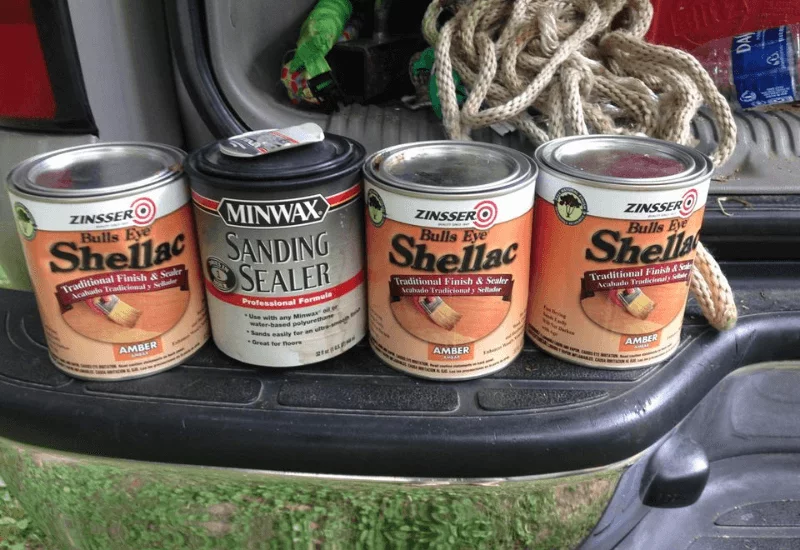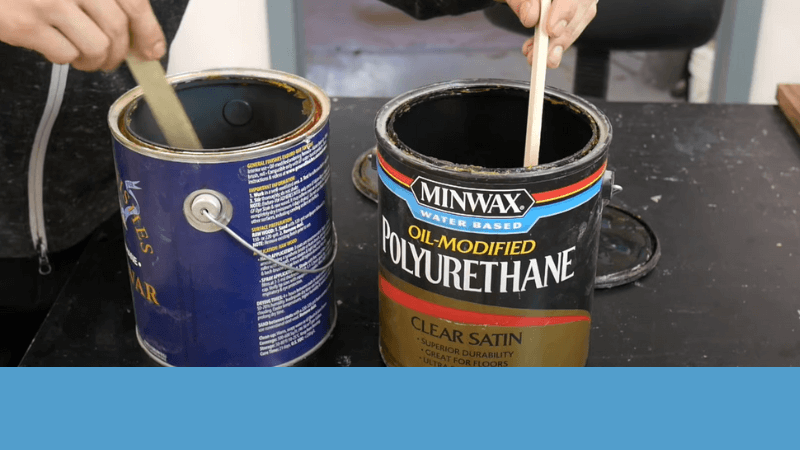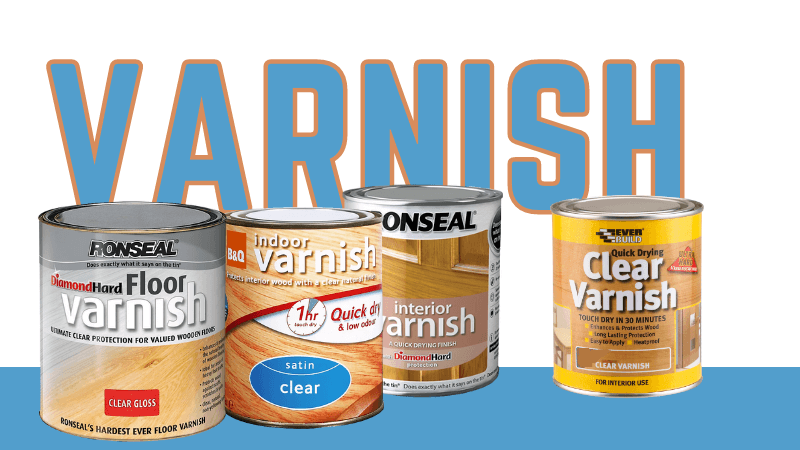Completing a woodworking project often culminates in choosing the right finish. This critical step not only protects but also enhances the appearance of your piece. Whether you are an amateur woodworker or a seasoned artisan, understanding the nuances of different topcoats can significantly affect the longevity and aesthetic of your work. So Shellac, lacquer, poly, or varnish? Lets jump right into it.
What are you looking for in a finish?

Fastest Drying Topcoats:
- Lacquer: Dries within 30 minutes, ideal when quick results are needed.
- Shellac: Takes about an hour to dry.
- Waterborne Polyurethane: Dries in approximately two hours.
- Standard Polyurethane: Has the longest drying time, typically over 24 hours.
Achieving a Crystal Clear Finish:
- Lacquer: Best for a crystal clear finish that highlights the wood’s natural beauty.
- Waterborne Polyurethane: Offers a close second with its almost-clear finish, preserving the original color of the wood.
Ease of Application:
- Wipe-on Polyurethane: Simplifies application, perfect for beginners and professionals.
- Spray-on options: Available for both polyurethane and lacquer, these are easy to use and reduce the need for complex equipment.
Durability and Repair:
- Polyurethane: Most durable, suitable for high-use areas such as tabletops.
- Lacquer: Slightly less durable but offers easy repairability by adding more coats to mend imperfections seamlessly.
Outdoor Projects:
Varnish (specifically Spar Urethane): Highly recommended for outdoor use due to its flexibility and resistance to elements, providing long-lasting protection against weather-induced damage.
Detailed Analysis of Topcoats:
1. Shellac:

Shellac is a time-honored finish derived from the secretions of the lac beetle. It has been used as a protective and decorative finish for centuries, valued particularly for its ease of application and aesthetic appeal. Shellac dries quickly, forming a film that can be easily repaired by applying another coat, as the new layer re-dissolves and merges with the existing one. This feature makes shellac an excellent choice for projects requiring routine maintenance or repairs. However, its alcohol solubility can be a drawback. For instance, placing a hot drink or spilling alcoholic beverages on a shellac-finished surface can result in damage, thus it’s less recommended for dining tables or bar tops where exposure to heat and alcohol is likely.
2. Lacquer:
Lacquer is known for its robust, hard finish that can resist damage from alcohol and household chemicals, making it a favored choice for surfaces that require a durable finish. Lacquer finishes can range from ultra-matte to high gloss, providing versatility depending on the desired aesthetic. The application methods vary, including spraying and brushing, allowing for a high degree of control over the finish quality. Modern lacquers, especially pre-catalyzed and catalyzed formulations, offer improved durability and resistance to yellowing over time. This makes lacquer suitable not only for furniture but also for cabinetry and other woodwork requiring a durable and attractive finish.

3. Polyurethane:
Polyurethane finishes are celebrated for their durability and resistance to wear, making them ideal for high-traffic areas and surfaces prone to heavy use. They are available in both oil-based and waterborne formulations, with waterborne polyurethane offering a faster drying time, less odor, and easy cleanup with water. Oil-based polyurethane typically imparts a warmer glow and can be more resistant to heat and solvents once fully cured. However, it requires a longer drying time and can have a more potent odor during application. Polyurethane’s tough protective layer is highly effective against scratches and other physical damages, which is why it’s commonly used on floors, tables, and other furniture.

4. Varnish:
Varnish is particularly noted for its excellent outdoor durability, making it an ideal choice for exterior woodworking projects such as decks, outdoor furniture, and boats. Its formulation often includes UV blockers and other additives that enhance its resistance to sunlight, water, and temperature variations. Varnishes are generally oil-based, providing a flexible finish that can expand and contract with the wood, which is crucial for outdoor applications where the wood is subjected to the elements. This flexibility helps prevent cracking and peeling, extending the life of the wood surface significantly.

These topcoats, each with their unique properties and applications, offer a range of options for woodworkers looking to enhance the durability and appearance of their projects. Understanding the specific characteristics and best use cases of each can guide woodworkers in choosing the most appropriate finish for their needs.
Conclusion
Choosing the right topcoat for your woodworking project is crucial in ensuring durability, beauty, and longevity. By understanding the properties of each type of finish, from lacquer to varnish, you can make informed decisions that will best suit your project needs and artistic intentions.
References:
- King, James. “Topcoat Selection Guide.” King’s Fine Woodworking, February 2018.
- L’Erario, Joe. Wood Finishing Simplified: No Chemistry Just Beautiful Results. Popular Woodworking Books, 2008.